The crypto market has recovered briefly, and a list of 5 top projects to be launched

Reprinted from panewslab
03/27/2025·1MAuthor: Ignas , DeFi Research
Compiled: Tim, PANews
The issuance of new tokens has slowed down, but I believe everything will accelerate soon because:
- The market is slowly recovering
- Many projects can no longer be postponed.
These projects will be tested to pave the way for other projects.
In this post, I want to highlight several protocols that appear frequently in my Twitter. However, it seems not everyone is familiar with what they do.
So, if you are also the "follower" on Twitter who are specializing in water posts and waiting for token airdrops, but don't understand what they do, then this post is for you.
Initia: The "Eden" of multi-chain ecology
Initia completed its first sale in the Echonomist Group, a Cobie-owned Echo fundraising platform.
Cobie's Echo fundraising platform has only completed three project financings so far, so Initia is worthy of bullishness. In addition, the main network online + airdrop plan may be launched at any time (but it seems to have been postponed until April).
If you want to choose a word to summarize Initia, it must be " intersecting each other" .

Initia is an L1 network that integrates different L2s to build a modular application chain ecosystem.
This sounds like Ethereum, but Initia wants to address the problems that ETH extremists are dissatisfied with Ethereum.
Unlike Ethereum L2 running in isolation, Initia deeply integrates L1 and L2 networks to build an intertwined ecosystem. These layer two networks are called "Minitias". This design idea is similar to the subnet of the Avalanche protocol (recently renamed L1).
Unlike Ethereum, but similar to Avalanche, the OPinit stack supports three major virtual machine architectures: EVM, MoveVM and WasmVM. This means that developers can choose the programming language they are most familiar with for development.
This may make ETH multi-army drool. Initia's on-chain liquidity mechanism allows individual pledge of INIT tokens, or to obtain earning rewards through the Delegated Proof of Stake (DPoS) mechanism using approved INIT-X liquidity pool tokens (with INIT tokens as trading pairs).
Built-in liquidity is good for Ponzi economics, and the mechanism forces 50% or more of INIT as trading pairs. These LP tokens must be authorized through whitelists.
Similar to Berachain, Initia also has a native decentralized exchange: InitiaDEX built on Layer1 based on the Move programming language. It is the liquidity hub of the Omnitia ecosystem, and according to my understanding, most of the liquidity will flow through InitiaDEX (and the mandatory configuration of INIA liquidity pool).
Initia also has more features like native cross-chain bridges (called Minitswap) and Vested Interest Program (Rollups can be rewarded by creating DAPPs and extending new use cases for INIT tokens). But for me, the four core functions mentioned above are still the most prominent highlights of the project.
Initia integrates Ethereum native users’ demands for Ethereum into a product to create an intertwined ecosystem.
Tokens and financing
Token economics details have not been fully released. Initia only shares four related details:
-50% of the supply is allocated to VIP and reserved liquidity pool
-Insiders do not have unlocked pledge rewards
- Community rounds enjoy about 30% off.
-15% attributable to investors
We can expect the Initia project to adopt airdrops with vesting, because its co-founder Zon once posted a statement saying "vesting is a gift. It can prevent you from selling too early and force you to maintain your faith."
In September 2024, Zon also revealed to The Block that Initia completed a US$14 million Series A financing with a US$350 million FDV, and investors include Theory Ventures, Delphi Ventures, Hack VC and other institutions.
The test network has an incentive mechanism, so even if you go to the official test network website to interact, receive test tokens and participate in ecosystem construction. All details can be found on the relevant pages of its test website.
As usual, I don't have much expectations for testnet activities.
Overall, the Initia ecosystem is well-built, but the key question still exists: Will builders and users choose to participate in it in depth?
Fogo: The Fastest Layer 1 Blockchain
Fogo is another project that is conducting token offerings on Cobie's Echo platform, raising $8 million at a valuation of $100 million.
Fogo uses Firedancer, a highly optimized Solana validator client developed by Jump Crypto, as the only execution client on its network.
Firedancer is not even enabled on the Solana network. Solana will soon benefit from the Firedancer client, but not all validators will switch to use it immediately. This means that the speed of the Solana network will be limited to the slowest nodes.
"It's like owning a Ferrari, but only driving on a blocked road in New York City," Fogo co-founder Doug Colkitt once said.
They revealed that Fogo's theoretical speed can reach up to 1 million transactions per second under ideal conditions (20 milliseconds of block time), but Fogo's developer network has actually reached only about 54,000 TPS. In contrast, Solana's current theoretical upper limit is 65,000 TPS, but the actual processing speed is 4,300 TPS at this stage.
The MegaETH test network achieved a high throughput of 20,000 TPS with a 10 millisecond block time.
In contrast, traditional financial systems can handle about 100,000 operations per second, and the delay is controlled in sub-second levels.
The Fogo team believes that decentralized networks must reach the level of traditional institutions in order to meet the use case needs of high-frequency transactions and instant payments.
It runs Solana Virtual Machine (SVM), which means developers can easily migrate Solana applications, tools, and infrastructure to the Fogo chain without any modifications. A wave of forks is expected to emerge, and new "shiny" tokens (such as Jupiter, Kamino, Pumpfun, etc.) will appear on the Fogo chain.
Obviously, not all participants in the Solana ecosystem are happy about it.

It is worth noting that Fogo 's contributors include members from Douro Labs, a team that is the development force behind the oracle network Python, which itself is closely related to Jump Crypto.
Other notable features of Fogo:
- Multi-local consensus ("Sun orbit"): Fogo divides validators into geographic "regions" that can operate semi-independently. Network control is regularly rotated to the next “region” to prevent a single validator from forming a dominant advantage. This means that consensus can be reached faster during normal operation, because information does not always need to circumvent the entire "earth".
- When the network starts, it will initially be equipped with a set of validators (20-50 people).
- GAS fee abstraction: supports the use of any token to pay for network processing fees.
Tokens and financing situation
Fogo raised about $5.5 million in a seed round led by Distributed Global and followed by CMS Holdings. The company has previously received $8 million in financing from the Echo platform.
The developer network will be launched at the end of 2024, the test network will be launched soon, and the main network is expected to be launched in mid-2025. There is not much information about tokens or airdrops at present.
Succinct: Building a Real World Software
“Cryptocurrency failed to fulfill its mission.”
“We have been promised a transparent, verifiable and trustless global coordination system. However, what we get is: cross-chain bridge hacks, multi-signal L2 networks without fraud proofs, and a committee of 21 validators who control billions of dollars.”
(Note: Here it is alluded to EOS developed by Blockone)
This is the main problem Succinct is solving.
"ZK zero-knowledge proof is one of the most critical technologies for blockchain to achieve capacity expansion, interoperability and privacy protection, but its complexity is currently difficult for most developers to grasp."
It is really hard to be excited about the progress of zero-knowledge proof, but Succinct successfully attracted my attention with its wonderful marketing offensive: they made the testnet and official website dashboard into a MacOS-style interface.
You can play games and earn points.
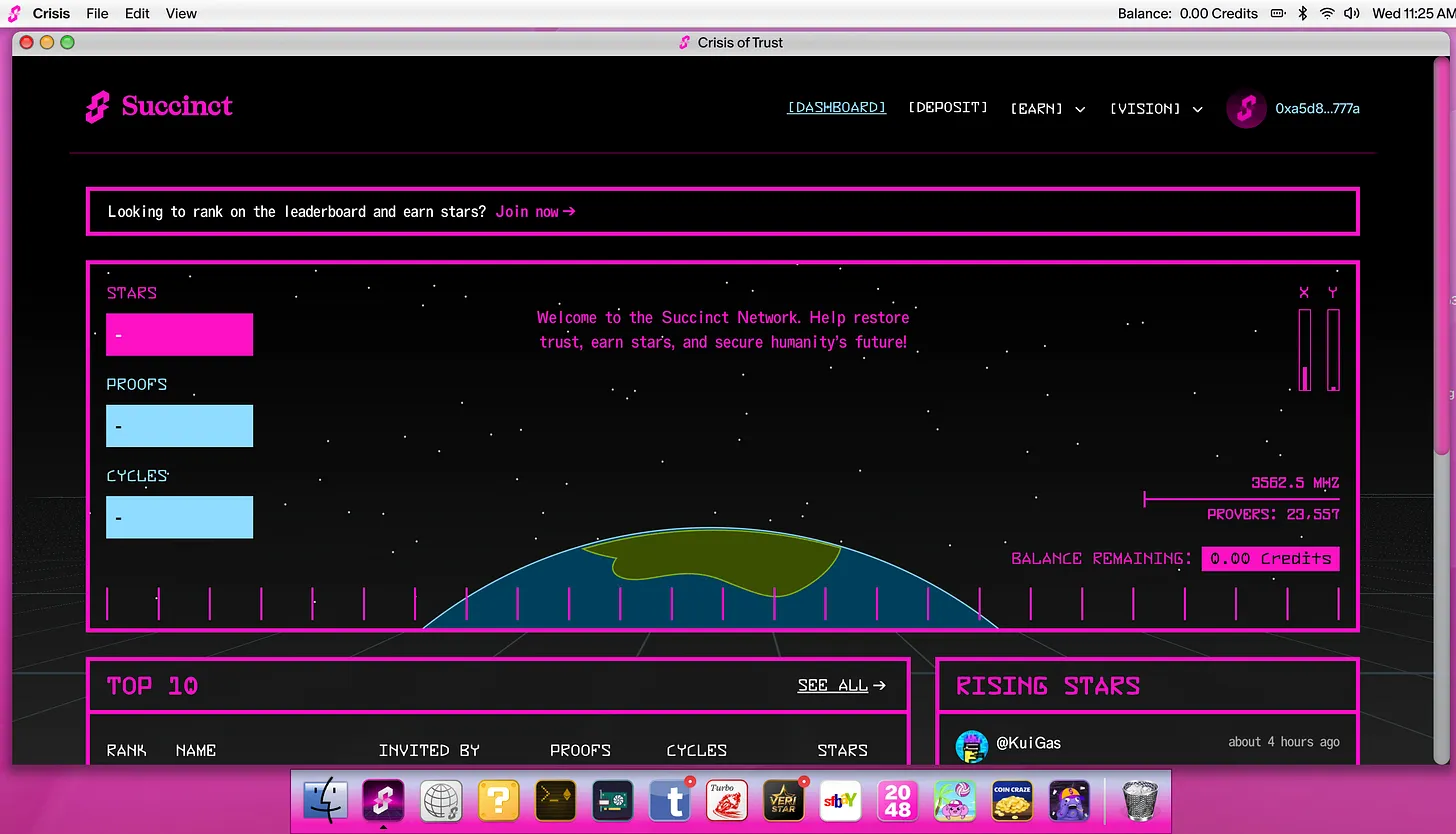
In short, the problems we are facing now are:
-
Each project needs to build its own proof system (e.g. zkSync and Scroll extend through zero-knowledge proof technology, but the infrastructure is fragmented).
-
Many rely on centralized service providers to generate proofs.
-
This approach is expensive and can hinder innovation.
Therefore, Succinct ZKPs is a technology that can verify authenticity through cryptography without revealing data. However, due to the fragmentation of infrastructure and high implementation costs, it faces huge challenges in practical applications.
Succinct provides a shared market for proof generation, allowing each project to no longer have to "repeat the wheel". Developers can focus on building applications (such as Rollup, cross-chain bridges, oracles), and outsource the work of generating proofs to network nodes to complete.
Famous partners: Polygon, Celestia, Avail, Gnosis
However, application scenarios are actually more diverse, such as private voting systems or anonymous trading scenarios. Or the user can also prove that they do have enough funds in their wallet without actually displaying the amount.
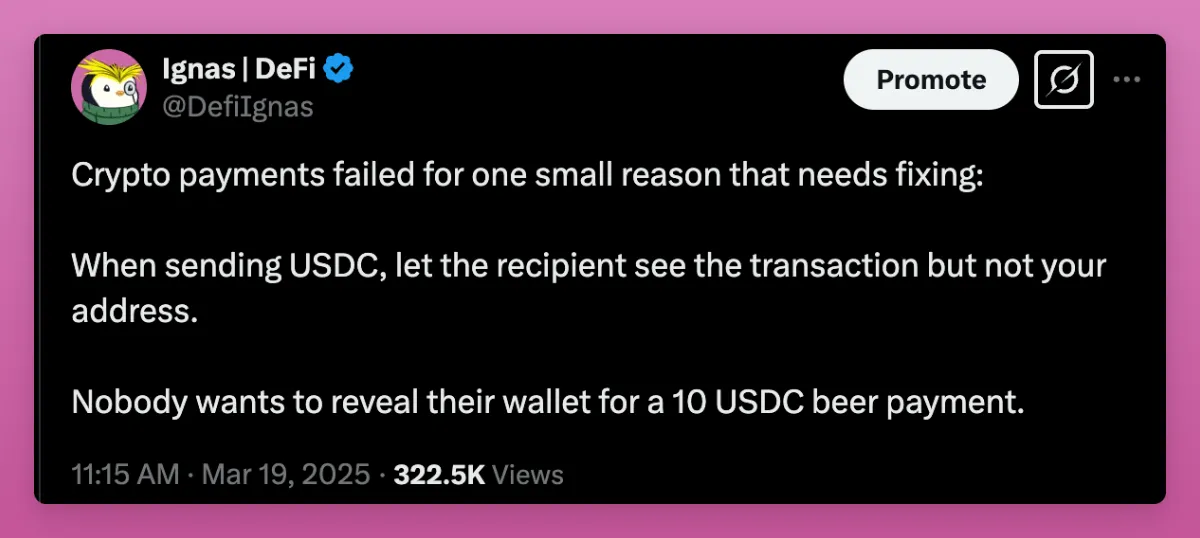
It's a technical project, but it may be a key link to connect and protect most vulnerable crypto projects.
Their test network - Phase 1: The Crisis of Trust, was launched two months ago. Users obtain star rewards by generating zero-knowledge proofs, but they need to pay 10 USDC coverage proof generation cost. It is worth noting that invitation codes need to be obtained by actively participating in community interactions such as Twitter and Discord.
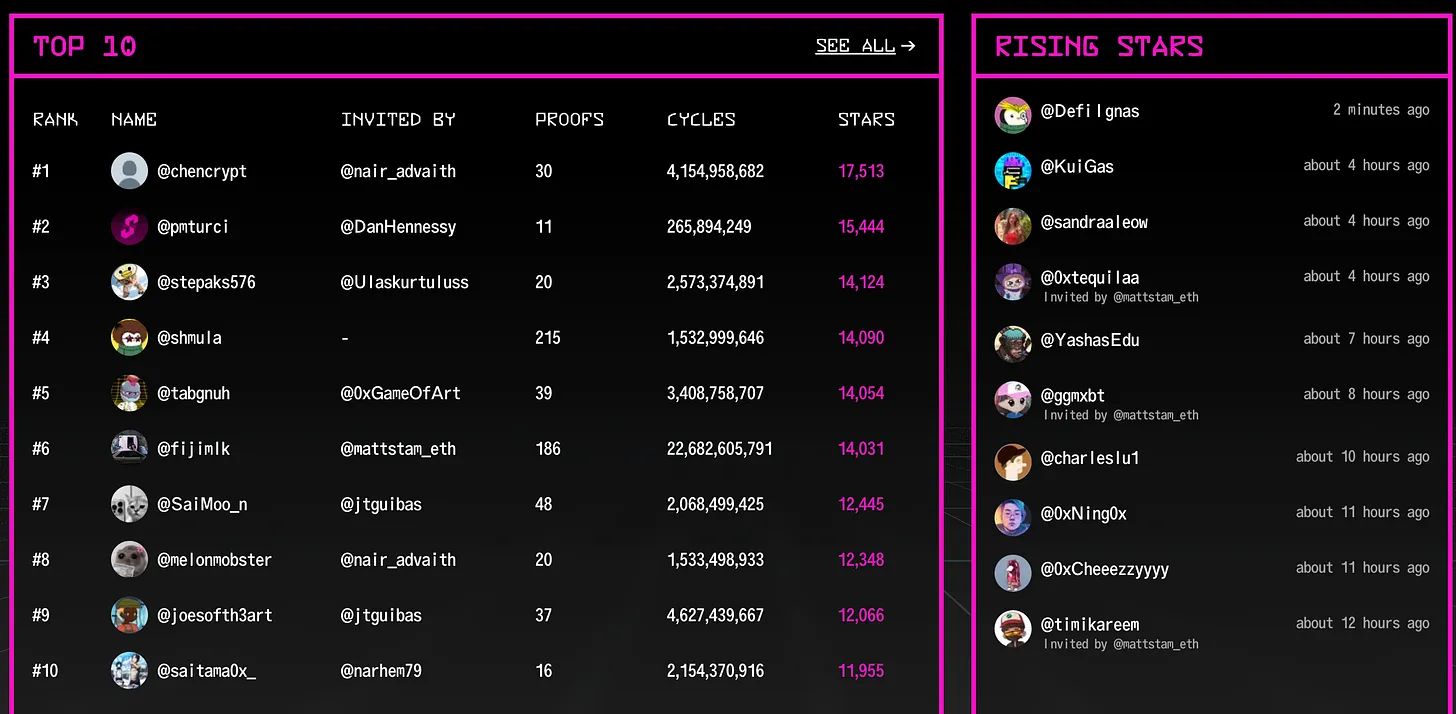
I guess there will be certain standards for airdrops, but the details of the tokens have not been disclosed yet.
Tokens and financing situation
Succinct completed a US$55 million financing, led by Paradigm, and participated by Robot Ventures, Bankless Ventures, Geometry and other institutions.
When the mainnet is officially launched, TGE is expected to be performed soon.
Resolv: A truly effective Delta neutral stablecoin
Many people now believe that the next round of altcoins surge will be driven by accelerated entry of institutional funds, especially stablecoins.
The current challenge is that the main beneficiaries of stablecoin adoption appear to be institutions and stablecoin issuers, while retail investors may only get leftovers.
The third round of retail investigative squeeze?
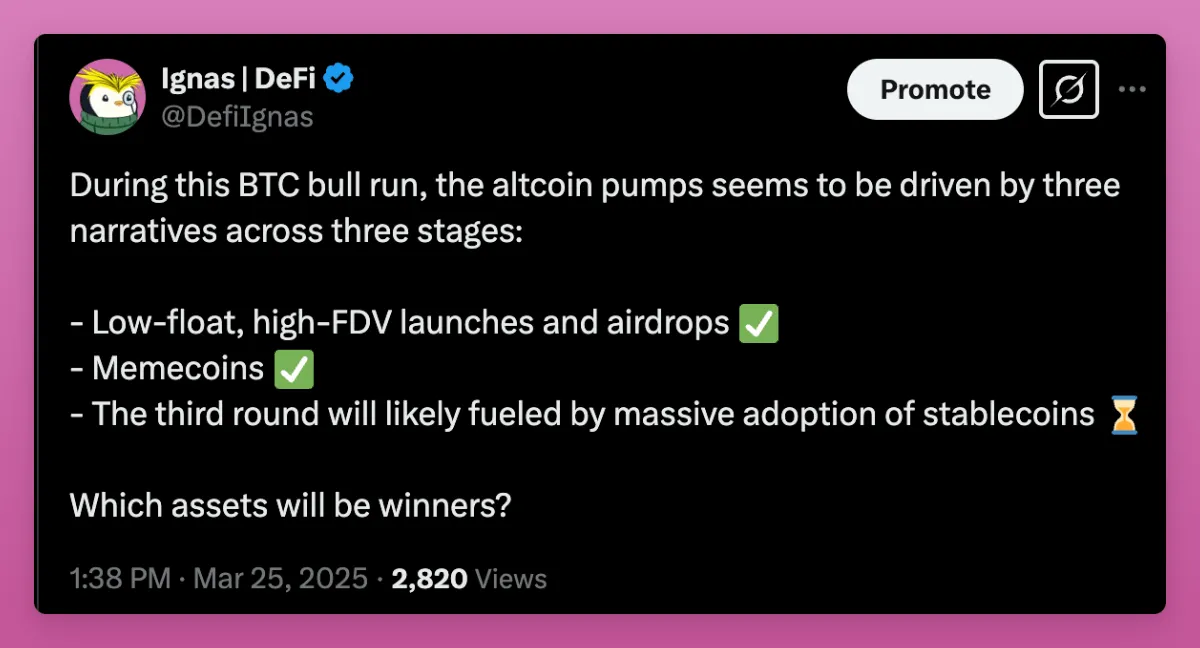
I've written some ideas about protocols that may benefit from stablecoins adoption , but I want to add one more protocol here: Resolv.
If you understand how Ethena works, you already have the basics of learning Resolv.
The core philosophy of Ethena and Resolv is exactly the same, which is to create stablecoins through a combination of crypto asset mortgages and perpetual contract short hedging. But what makes Resolv unique is its architectural design and implementation path:
1. Dual token model vs. Single token model
Ethena adopts a single token model (USDe), and all risks and benefits are borne by stablecoin holders and is managed in the background by the protocol reserves.
Resolv adopts a dual token model (USR + RLP) to achieve risk separation by explicitly isolating risks to independent tokens.
Similar to USDe, USR maintains its pegged exchange rate through a delta neutral strategy and hedges ETH price risks by shorting futures. Users can earn profits by pledging USR and converting them to stUSR, which is similar to the functionality of a savings account.
RLP, as the insurance mechanism of USR, maintains the stability of USR by absorbing losses (for example, when the capital rate is negative). RLP holders take higher risks to obtain stronger returns. Its value fluctuates with the performance of the agreement, which is essentially a dynamic buffering mechanism: the value grows when the agreement makes a profit, and the value shrinks when it loses.
This mechanism allows risk-favored users to obtain higher returns while protecting stablecoin users from market risks. As of this writing, USR (Stable Income Reserve) provides an annualized interest rate of 4.3%, while RLP (Risk Liquidity Pool) provides an annualized rate of return of 6.7%.
Although not too high, Resolv's strategy of obtaining airdrops through points mining has brought its total locked value (TVL) to US$637 million, which is already quite good.
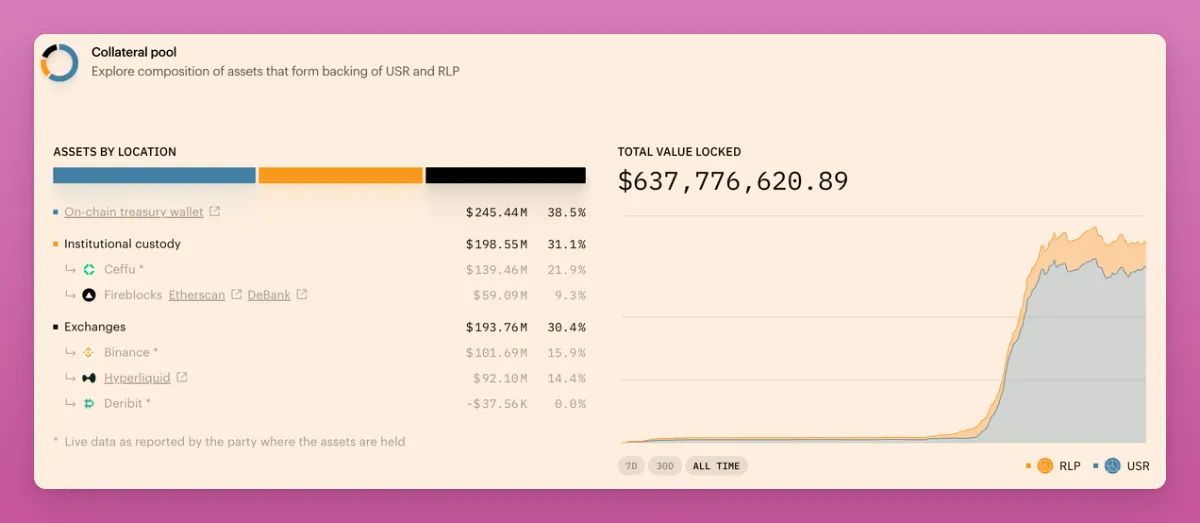
2. Differences in source of mortgage assets
The core philosophy of Resolv is that it is completely backed by cryptocurrency. All collaterals are ETH (recently announced new BTC support) and do not involve any real-world assets (RWA).
Initially, Ethena also only supported cryptocurrencies, but later launched the secondary stablecoin USDtb, which has a 90% reserve of cryptocurrency powered by BlackRock's tokenized money market fund BUIDL.
USDtb is in a sense an insurance token similar to USR tokens in the Resolv project, aiming to maintain the currency value of USDe during bear markets by providing traditional asset returns when cryptocurrency returns fall.
Therefore, it can be said that Resolv is essentially more "crypto-native" and adheres to the concept of decentralization, and Ethena may be able to obtain additional stability guarantees by introducing centralized assets.
Tokens and financing situation
Resolv has not officially announced the financing details, but its investors include Delphi Labs, Daedalus and No Limit Holdings. In addition, the project is planning to raise funds through the Legion platform, and the community round is about to start.
Starting from September 2024, Resolv has officially launched a point reward program. Users can still earn points by depositing stablecoins.
After saving, you can maximize points through Pendle pool or other strategies.
The $RESOLV token is expected to be released in early 2025.
Snapchain: Or the largest consumer-grade Layer 1 public chain
My biggest concern about emerging blockchains such as Fogo and Initia is whether they can truly gain market adoption? What killer applications will be born on these chains? As Kyle said, “General-purpose blockchains will die. Each chain must have a clear application scenario, and these scenarios will be defined by what is built on the chain.”
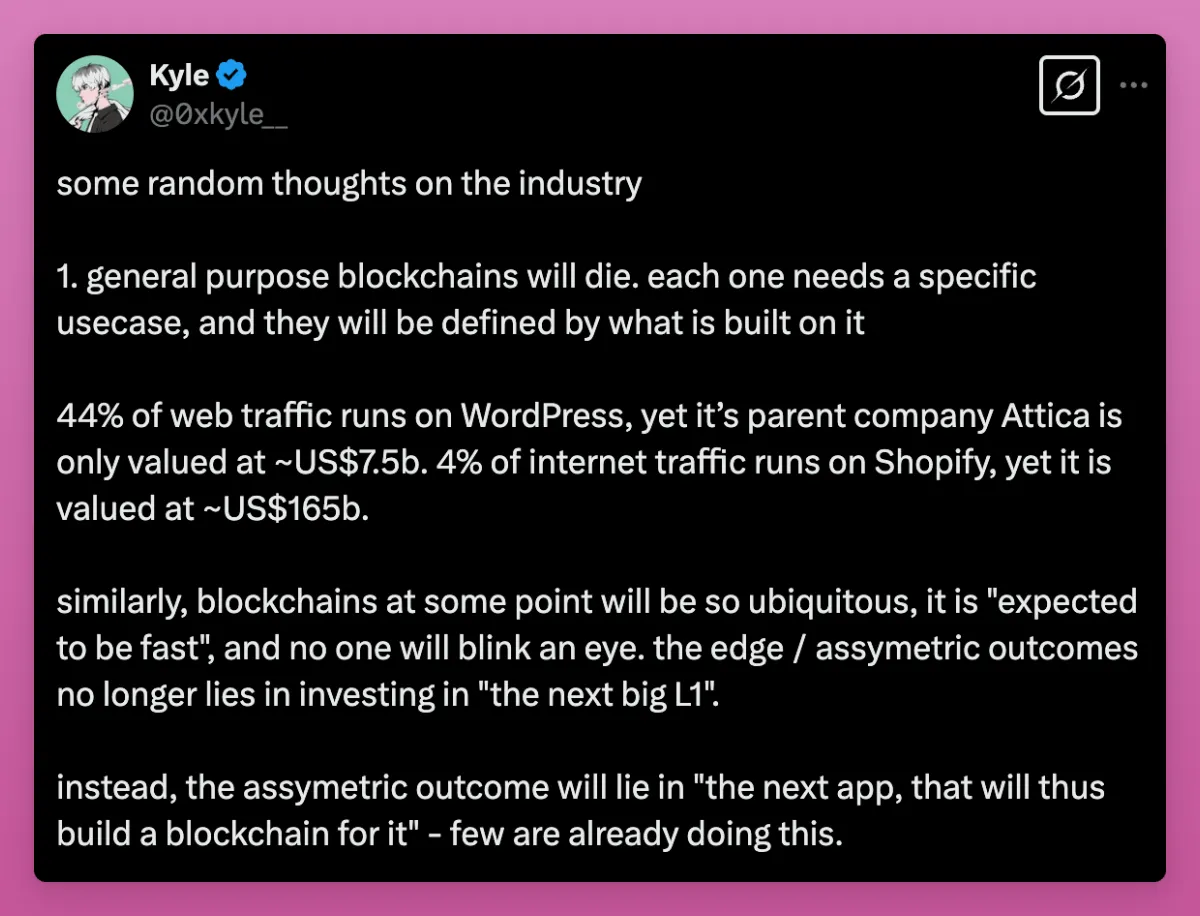
This is the Layer1 blockchain, Snapchain, created specifically for the Farcaster social network, shows its strengths.
Snapchain was born from the pain points of data synchronization difficulties and real-time update delays when decentralized social networks expand in scale. Although the Lens protocol chose to use zkSync technology, the Farcaster team is independently developing solutions that adapt to its ecosystem.
"Taking Twitter as an example, the platform has 200 million daily active users, the number of transactions (TPS) processed per second (TPS) reaches 10,000, and the daily growth of its state data may be between 1TB and 10TB."
Farcaster's current system works well on a small scale, but crashes when the number of users and nodes increases. Snapchain will solve this problem in a decentralized way.
When the main network is started, it should be able to reach 9000+TPS and can carry 2 million daily active users (the current daily active users are about 50,000).
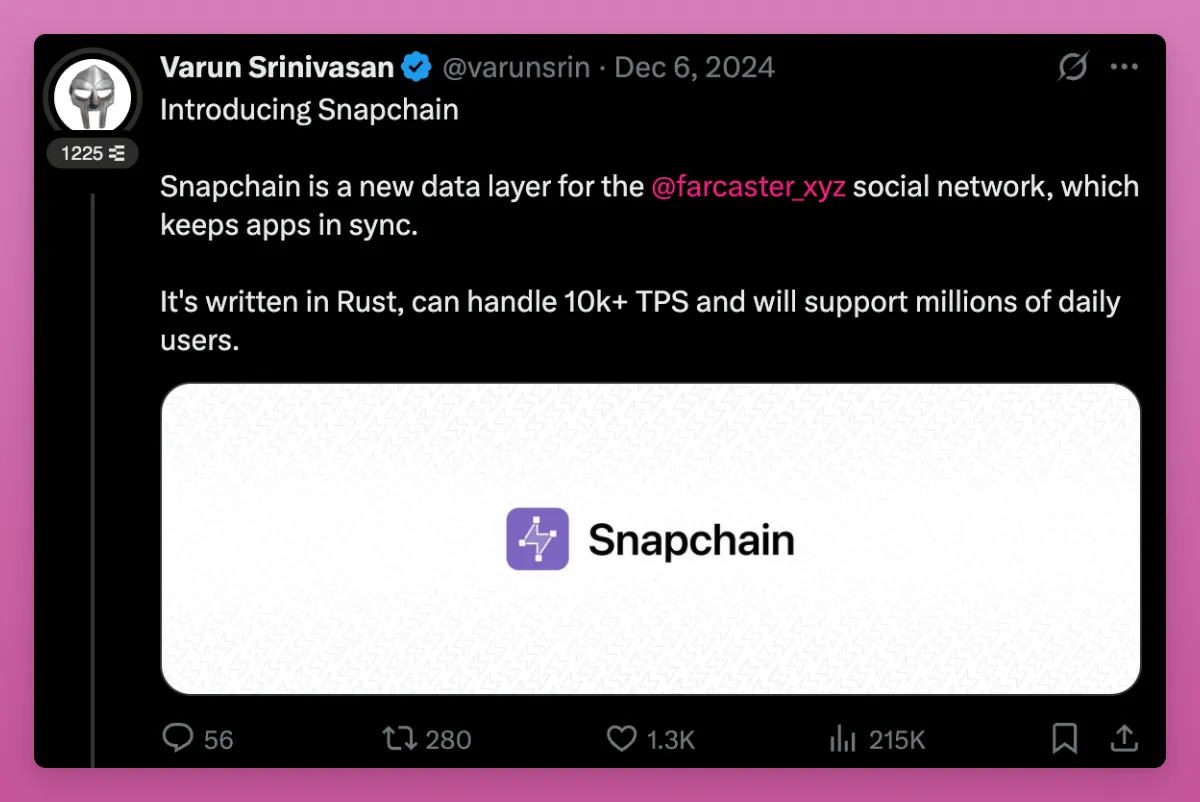
I won't be too tangled with technical details, but there are two exciting highlights next:
First of all, it refers to deleting data (i.e. data pruning), laughing and crying.
On blockchain, most data needs to be saved permanently, but what if you regret it immediately after sending an emoticon package? It must disappear! Disappear forever!
Therefore, on Snapchain, old data (such as posts, likes, followers) can be deleted once it is no longer needed.
It is crucial that users pay $2 or $3 per year to get processing speeds of 500 transactions per hour and storage limits of about 10,000 transactions.
Therefore, if you delete the old transaction, you can make room for storage for the new transaction (or choose to pay more fees to keep the old transaction).
The second cool thing is the sharding technology. You should know that before Ethereum switched to the Layer 2 expansion solution, it considered scaling through sharding technology.
Imagine recording all social media interactions (likes, posts, etc.) on the blockchain. Millions of data every day. If each node has to store and process everything, it will result in delays. Every full node needs to process every transaction, even if those transactions are not related to them. This model can still operate for currency transfers and smart contracts, but it is obviously insufficient in the face of real-time social applications that require high scalability.
Snapchain solves this problem by making each user completely independent (when registering with Farcaster, you get an ID number, which becomes a capital to show off if the number is smaller and higher). Your post will not affect my account.
Snapchain spreads users into multiple shards (BTW, a design inspired by Near's model). Each shard handles only the transactions of the user it belongs to. This means that as the number of users increases, the number of shards increases accordingly, and the system throughput increases.
To ensure that all shards remain synchronized, there is also a final layer: a main chain that packages each shard and publishes the global block.
Ethereum cannot do this easily. Its transactions rely on shared states—smart contracts, tokens, and balances. This makes it difficult to implement account-level sharding.
Snapchain is effective because social behavior is simple enough. These behaviors only affect the sender himself.
There are more Snapchain related content, and you can find out more about it here . But I am optimistic about Farcaster and Snapchain because they are adopting the "apply first and then chain" strategy, that is, first build the actual application scenario and then add the blockchain underlying layer to them.
Hyperliquid adopts this strategy with significant results. Although Farcaster has only 50,000 daily active users and 900,000 total users, it is still one of the top consumer applications.
Start date and tokens
In short: The Creation block has been successfully activated, and the main network is scheduled to be officially launched on April 15, 2025. This is already in front of you!
I believe that after Snapchain is officially launched and Farcaster is ready to scale, this social ecosystem will be integrated into the Coinbase wallet.
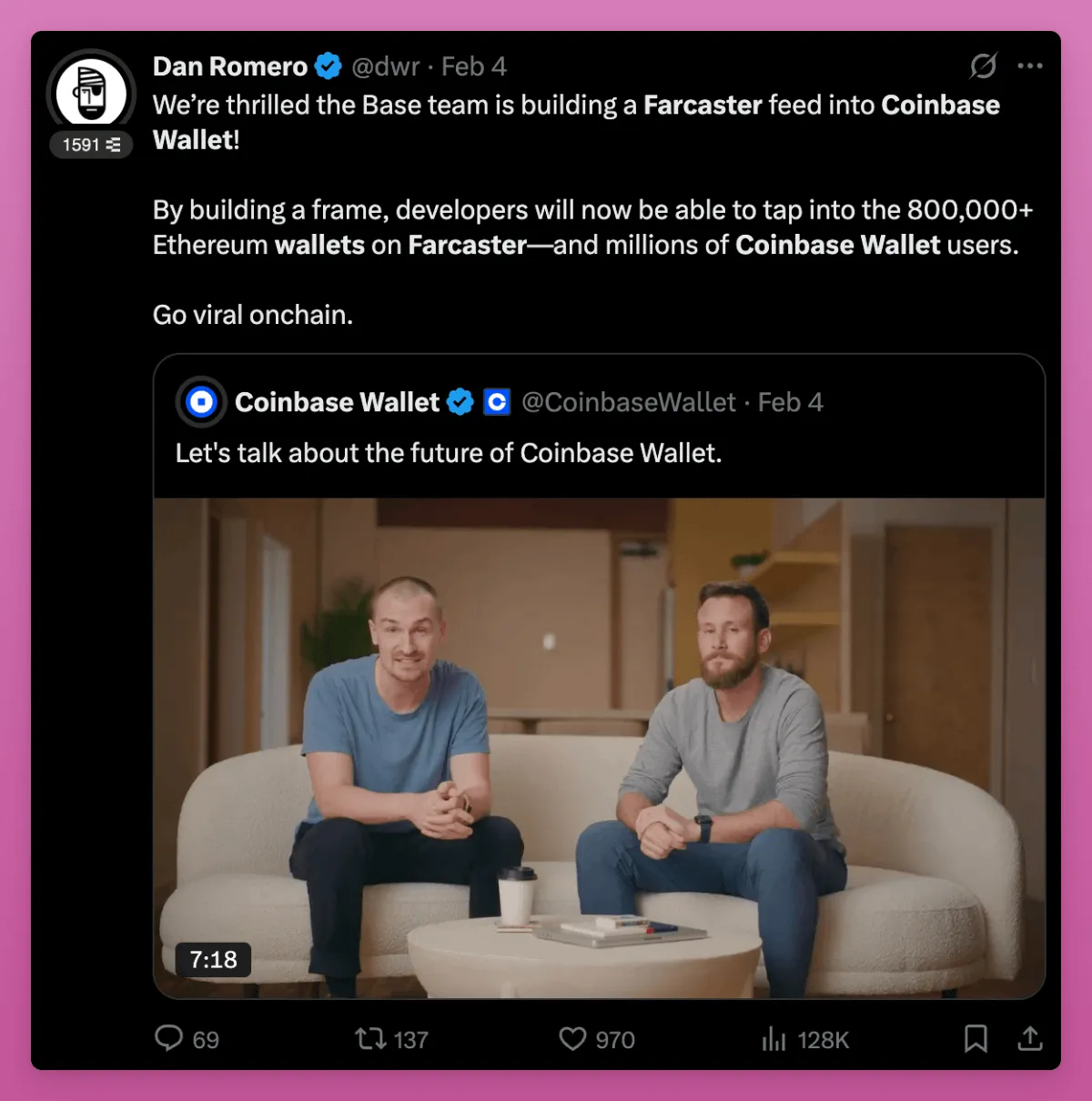
The Coinbase wallet integrates social media information flow, which is a big deal.
However, I am not sure when the token will be launched, and the team has been silent about this, but some recent rumors and financing news are likely to indicate the coming.
Financing
Snapchain itself is a technical component, not an independent fundraising entity. The development of Snapchain is funded by Merkle Manufactory, which is building the Farcaster protocol.
Most notably, in May 2024, Merkle Manufactory announced that it had completed a US$150 million financing round, led by Paradigm and followed by other major investors such as a16z crypto, Haun Ventures, USV, Variant and Standard Crypto.

